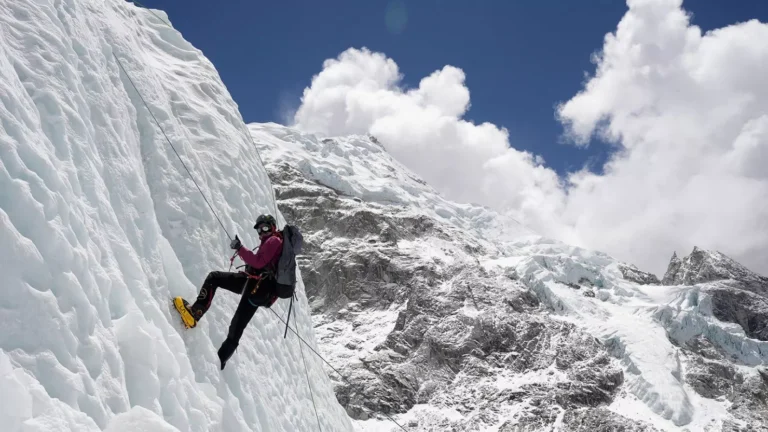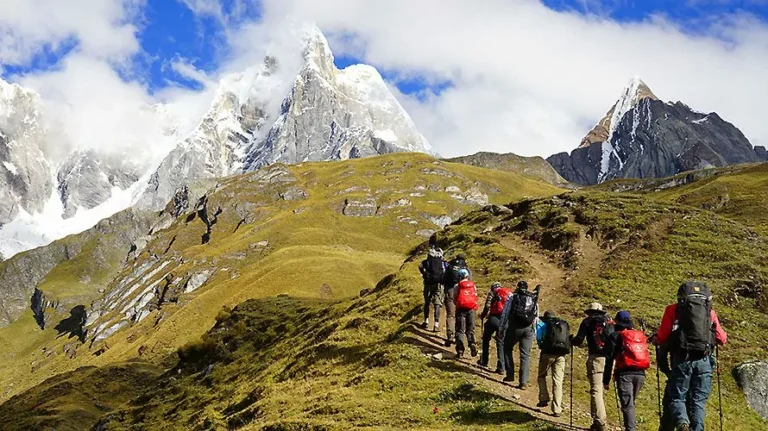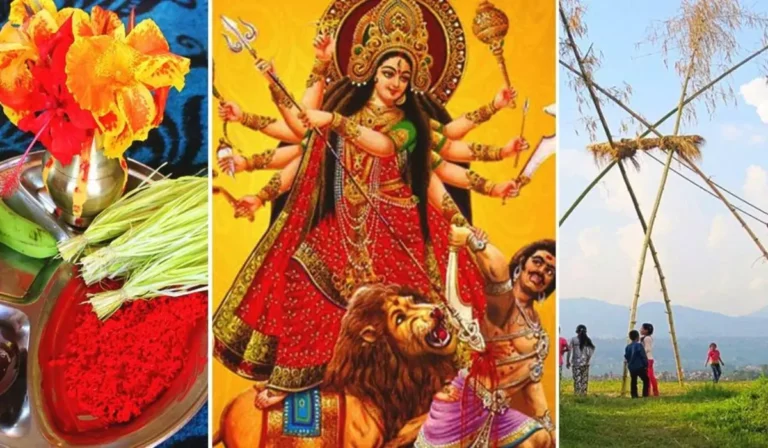- PUBLISHED
Hiking in the Rain: Essential Gear, Trail Tips, and Safety Advice
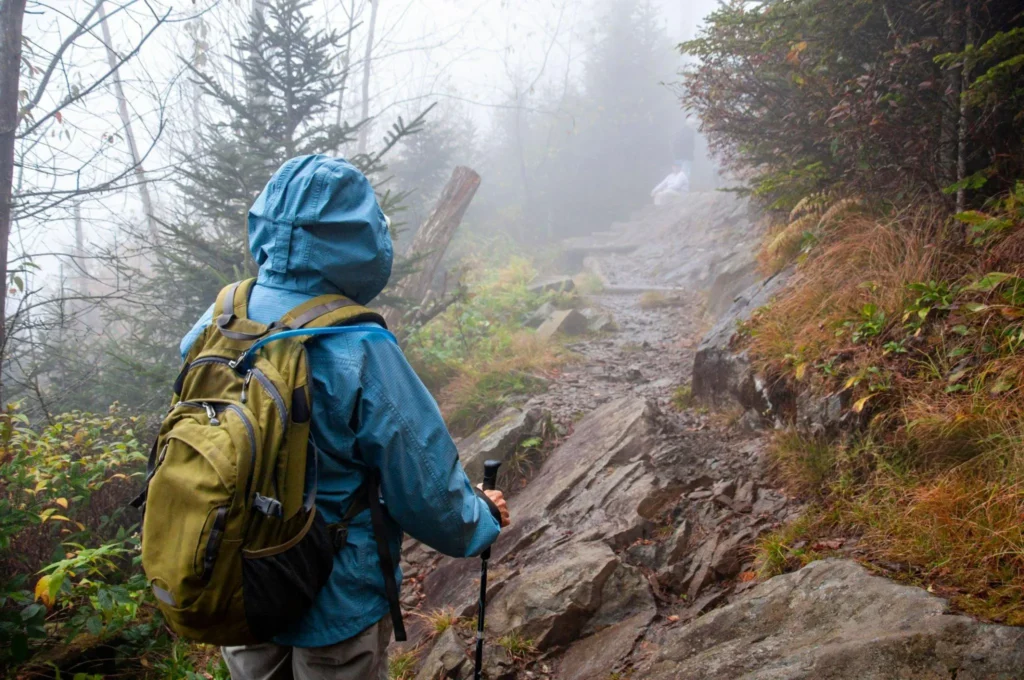
Hiking when it’s raining might sound challenging at first, but it can actually become one of your most rewarding outdoor experiences. What makes all the difference is how well you’re prepared. From choosing the right trail to knowing how to stay dry and safe, hiking in the rain is all about having the right gear and plan in place. With the proper essentials in your pack and a few smart strategies, even a wet trail can feel like the perfect adventure.
Benefits of Hiking in the Rain
While hiking in the rain is the most fulfilling experience, only those who step outside for hiking can feel this magical experience and can see the natural transformation with their eyes. Wet-weather adventures offer a fresh perspective on nature, with greenery everywhere, and provide the perfect opportunity to breathe fresh air and hone your trail skills.
- Fewer people: In the rainy season, mostly on all hiking trails, there are comparatively fewer people, so you enjoy your solo company, have more time to explore yourself, and enjoy the calmness of nature alone. It’s a great time to heal and reflect as the rain nourishes trees and plants.
- Cooling effect: The natural cooling effect of rainfall keeps your body temperature balanced during physical exertion, making hiking in the rain more comfortable than sunny hikes.
- Scenic benefits: The atmosphere completely changes with fog, shiny leaves, and flowing streams. You have a visual treat as the trails become so cinematic when hiking in the rain.
- Wildlife: Many creatures, especially amphibians, insects, and birds, are more active during the rain. It’s a good time to spot rare species during your trekking in Nepal or backyard nature walks.
When to Cancel Your Hike
It’s exciting to head out in a drizzle, but it’s equally important to know when the conditions are too risky. Not every trail or situation is suited for rainy-day hiking. You should always keep safety your top priority, no matter how eager you are to get outdoors. Here are a few circumstances you should be aware of and avoid when hiking in the rain:
- Lightning risk: Thunderstorms are dangerous, especially in exposed areas. Avoid hiking during active lightning, particularly in open meadows or ridgelines.
- Flooding potential: Trails close to rivers or low-lying regions can flood quickly, making them unsafe. There are some regions prone to heavy monsoon in Nepal treks, so you can avoid hiking in these yearly floods.
- Landslide zones: Loose slopes and mountainous trails are vulnerable in the rain. If you’re trekking in the rain near the Himalayan regions, landslides are a real hazard.
- Insufficient gear: Without reliable waterproof gear for hiking, your clothing and essentials will be soaked, which can make your journey difficult and increase the risk of cold-related issues. You should pick the best rain jacket for hiking.
- Personal health: If you’re sick, injured, or recovering, it’s better to skip the rain hike. Wet, cold conditions demand high energy levels and can stress your body. Once you become fully healthy, you can go hiking in the rain.
You should always double-check your rain gear list and local trail reports before committing to hiking in the rain.
Picking the Right Trail for Hiking in the Rain
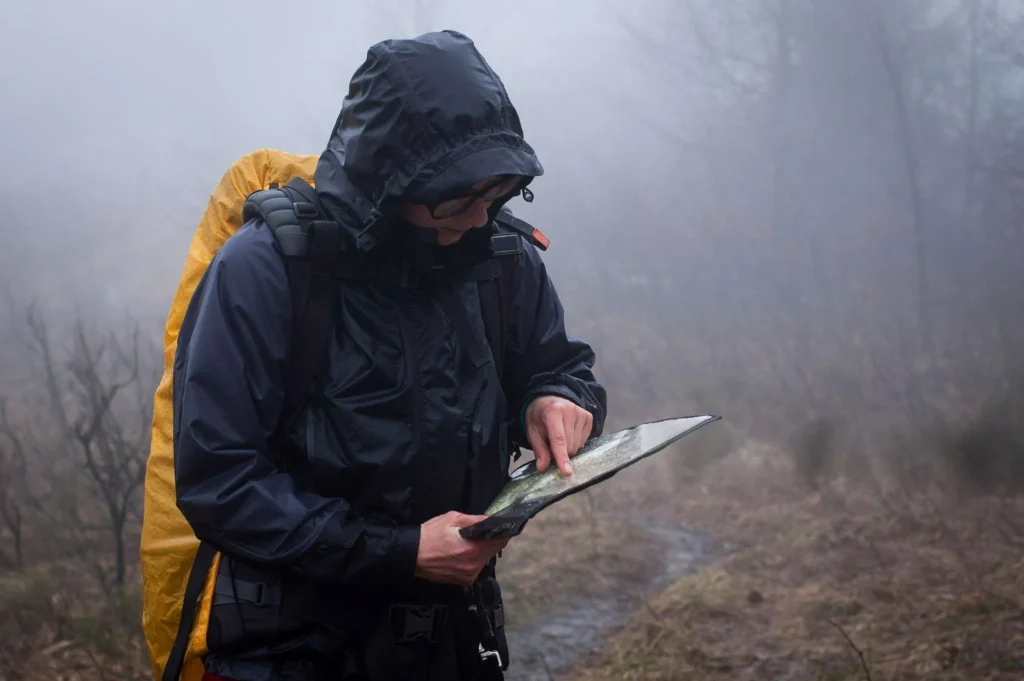
Every trail has its own specialty, and among them, some trails are better to hike in the rain than others. The type of terrain, elevation, and vegetation can impact not just your safety but also your enjoyment. You should make the right trail choice, which is an important part of successful hiking in the rain.
- Well-drained paths: Trails with gravel or good drainage prevent puddles and mud build-up, making them more suitable for wet treks. Avoid clay or soft-soil paths that turn slippery quickly.
- Lower elevation: High-altitude areas receive colder rain and are prone to cloud cover and wind. Stick to lower routes that stay warmer and more manageable for hiking in rain.
- Forest coverage: Dense trees provide some natural shelter and absorb rainfall, making it feel less intense. These areas are ideal when trekking in the rain with only basic rain gear list items.
- Clear markers: Rain reduces visibility, so choose trails with obvious signs and trail blazes. This is essential when hiking in the rain, especially in unfamiliar areas.
For a quicker escape closer to the city, a one-day hike near Kathmandu is a great way to enjoy the monsoon season.
Gear for Hiking in the Rain
Rain doesn’t have to ruin your trip as long as you pack wisely. The right rain gear list prepares you for nearly anything. Let’s break down what essentials to carry when you’re planning a rainy hike or a multi-day Nepal trek in monsoon season.
Rainwear
Good rainwear is your first defence against wet conditions. You should carry waterproof gear for hiking but also breathable to avoid sweating underneath.
- The best rain jacket for hiking should have sealed seams, pit zips, and adjustable cuffs.
- Rain pants help protect your legs from wet brush and puddle splash.
- Ponchos are great for airflow and can cover both you and your backpack.
Footwear
Footwear plays a big role in keeping your hike safe and comfortable. Slipping, soaked socks, and cold toes can ruin the experience.
- Choose waterproof hiking boots with a strong grip.
- Use gaiters to seal out mud and water.
- Add spare socks to your backpacking rain gear setup, preferably made of wool or synthetic material.
Trekking Poles
When hiking in the rain, the trail often becomes slick and unpredictable. Trekking poles give extra stability and control, especially when going downhill. You should know how to attach a trekking pole to a backpack.
- They’re useful for balance in mud, water crossings, and uneven trails.
- A must-have for wet conditions during trekking in rain regions like the Annapurna Circuit.
Pack Protection
No one likes opening their backpack to find soaked gear. Rain can creep in unless you’re using proper protection. You should do proper backpacking as per your needs to keep everything dry and balanced.
- A fitted rain cover is essential for your pack.
- Use dry bags for electronics, clothes, and food inside.
- For backup, a plastic garbage bag inside your pack can act as a waterproof liner.
Emergency Shelter
The weather can change suddenly, especially in mountainous regions.
- A lightweight tarp or emergency bivy lets you hunker down safely.
- If you’re on extended Nepal treks, this is vital for protection from sudden downpours.
Blister Care and Hand Warmers
Blisters form more quickly when your feet stay wet for too long. Your hiking in rain gear must include foot care and warmth items.
- Moleskin or second-skin patches can prevent blisters.
- Hand warmers help keep circulation going when wet gloves stop insulating.
What to Wear When Hiking in the Rain
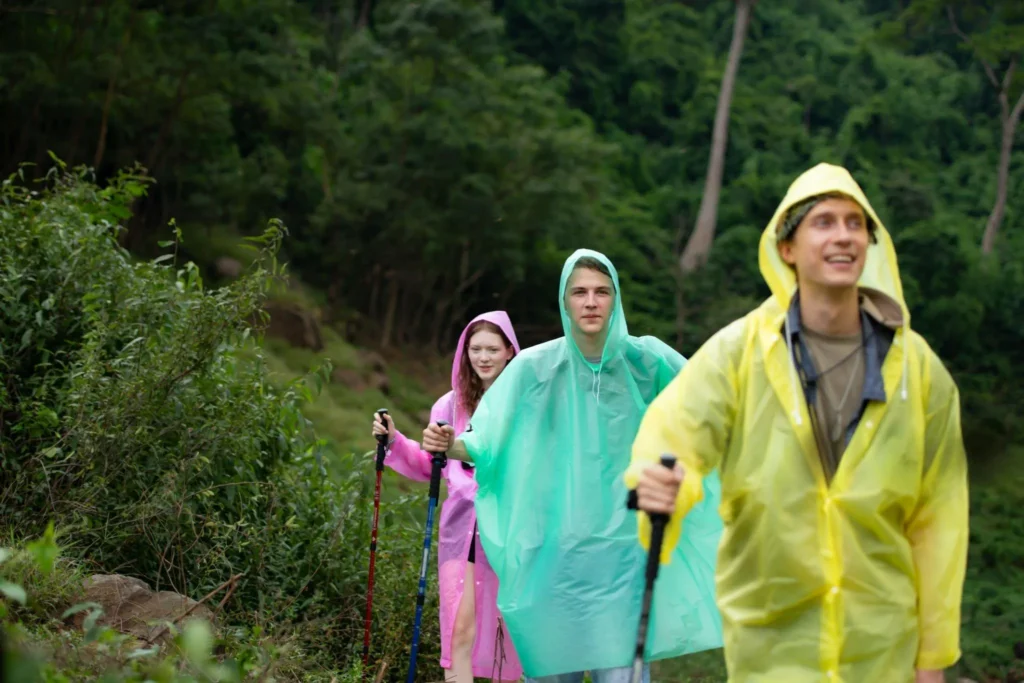
Layering is key to staying comfortable and dry while you’re hiking in the rain. Your clothing should insulate, wick moisture, and offer protection from wind and water.
Base Layer
Good rainwear is your first defence against wet conditions. You should carry waterproof gear for hiking but also breathable to avoid sweating underneath.
- The best rain jacket for hiking should have sealed seams, pit zips, and adjustable cuffs.
- Rain pants help protect your legs from wet brush and puddle splash.
- Ponchos are great for airflow and can cover both you and your backpack.
Insulation Layer
Your mid-layer retains body heat and keeps you warm.
- Go for fleece or synthetic-fill jackets; they insulate even when damp.
- Don’t use cotton, which holds moisture and causes chills.
Rain Layer
The rain layer keeps wind and water from getting in.
- A high-quality, best rain jacket for hiking protects your core.
- Look for breathable fabrics that vent excess heat and moisture
Accessories
These smaller items can make a big difference during wet-weather treks.
- A hat with a brim deflects rain from your eyes.
- Waterproof gloves maintain dexterity.
- Buffs or scarves protect your neck from cold wind and wet gear.
Tips for Hiking in the Rain
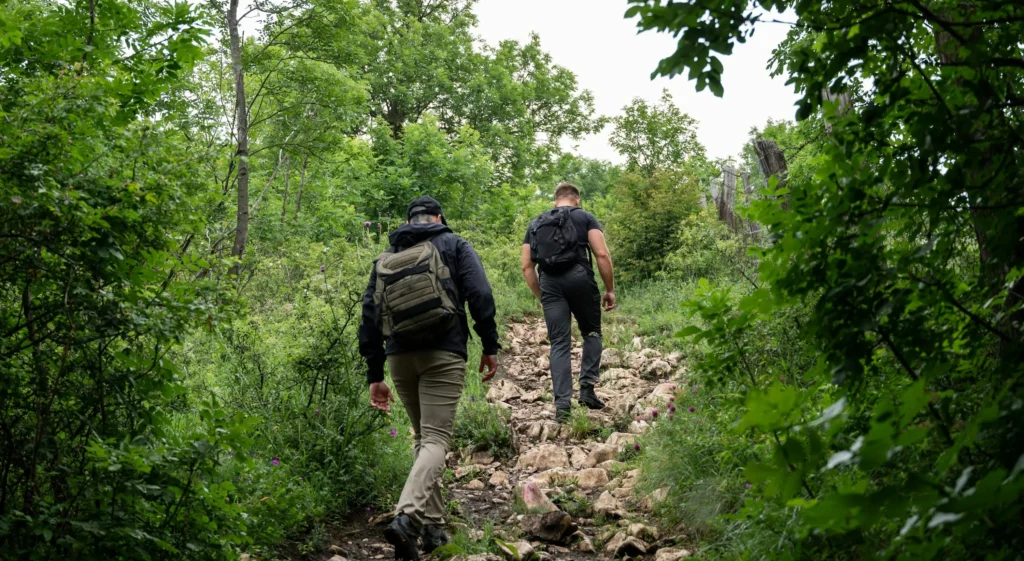
Staying safe and comfortable while hiking in the rain involves more than packing right. Use proven strategies to stay warm, dry, and alert on the trail. Here are a few tips that can make your hiking a bit easier:
1. Start Early
Rain slows things down. Get on the trail early to ensure you finish in daylight; the walking becomes difficult at nighttime, especially when it’s raining.
2. Use Landmarks, Not Just GPS
Wet weather can interfere with electronics.
- Learn visual landmarks and carry a waterproof map.
- Reliable navigation is part of a smart rain gear list.
3. Limit Breaks to Stay Warm
Cold air can quickly chill your body when you stop moving.
- Keep breaks short and consider layering up before stopping.
4. Regulate Body Temperature
Avoid overheating by adjusting your layers frequently.
- If sweat builds up, you’ll get cold once you stop. Good hiking in rain gear includes ventilation features.
5. Monitor for Hypothermia
You should always be aware of your physical condition.
- Shivering, clumsiness, and confusion are the basic signs you need to stop and warm up.
6. Pack Energy-Rich Snacks
Hiking in wet weather burns more calories.
- Choose trail food high in fats and carbs, like granola bars or nuts.
- A good backpacking rain gear plan includes fuel for your body.
7. Keep Hydrated
Even in cool rain, dehydration is a risk.
- Drink water regularly, even if you don’t feel thirsty.
8. Minimize Trail Impact
Trail erosion is worse in wet conditions.
- Stick to the center of the trail, even if muddy.
- This protects the environment, especially in sensitive regions during Nepal treks.
Post-Hike and Campsite Considerations
Once the hike is over, recovery and gear care are critical to your comfort and health.
- Hang your wet gear to dry as soon as possible.
- Use a change of dry clothes to warm up immediately.
- Hot tea or soup helps restore warmth after hiking in the rain.
- Check for blisters, chafing, or cold damage to hands and feet.
- When camping, pitch your tent on elevated ground and use a rainfly.
Conclusion
Wherever your trail takes you, whether it winds through misty forests, climbs rugged mountain paths, or meanders, embracing the experience of hiking in the rain brings out a special kind of magic. With the right mindset, solid planning, and dependable hiking in rain gear, every step becomes more intentional and more rewarding. Prioritize your rain gear list, stay alert, and enjoy the rhythm of raindrops on your jacket. The sights, sounds, and solitude found on a wet trail are unmatched. Let the rain guide your path; you may just discover your best hike yet.
Plan your next rainy-day adventure with confidence! Book your guided treks with us today and explore nature like never before.
Table of Content
Frequently Asked Questions
Is hiking in the rain worth it?
Absolutely, hiking in the rain can be a great experience as it offers solitude, beautiful scenery, and a unique way to reconnect with nature. Hiking in the rain can be just as rewarding as a sunny trek when you’re well-prepared.
Is it safe to hike in the rain?
It’s safe to hike in the rain with good planning and the right gear. Stick to safer trails, wear proper hiking rain gear, and avoid risky weather.
How to keep your feet dry when hiking in the rain?
Keeping your feet dry starts with a few essential steps:
- Wear waterproof hiking boots with sealed seams
- Use gaiters to block water from entering your shoes
- Pack extra pairs of moisture-wicking socks
- Dry feet during breaks with a small towel
What rain gear do I need for hiking in the rain?
The right rain gear list keeps you dry and comfortable:
- A breathable, waterproof jacket (the best rain jacket for hiking is one with ventilation zippers)
- Rain pants to protect your lower half
- A backpacking rain cover or liner to keep your gear dry
- Dry bags inside your pack for clothing and electronics
How do you stay comfortable while hiking in rain gear?
A few tips help you stay warm and focused even in wet weather:
- Adjust layers often to avoid overheating
- Choose lightweight, breathable, waterproof gear for hiking
- Avoid cotton clothing that traps moisture
- Take shorter, more frequent breaks to maintain warmth
What should I avoid when hiking in the rain?
To stay safe and enjoy your trek, avoid these common mistakes:
- Starting your hike too late in the day
- Using non-waterproof shoes or gear
- Ignoring weather alerts, especially during Nepal treks
- Walking off-trail, which damages the terrain and increases injury risk
Need help choosing a trail?
Connect with a local and plan your perfect trek.

